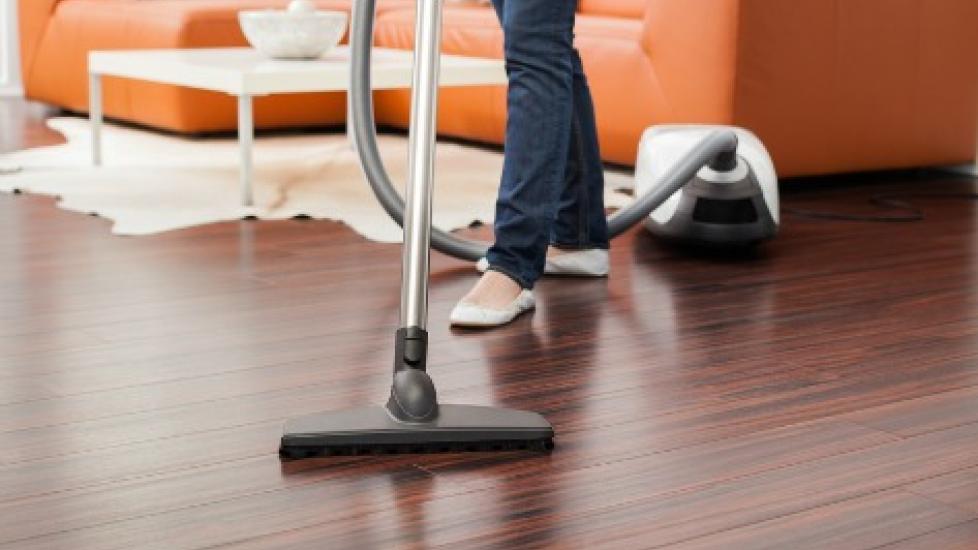Tips for Vacuuming Pet Hair
By Kerri Fivecoat-Campbell
Furry pets are a big part of American households and, as any pet parent knows, cats and dogs make excellent company. But inevitably, their hair winds up everywhere. Pet hair and dander can be more than just annoying, it can be dangerous if anyone in the household has allergies. The Asthma and Allergy Foundation of America reports that as many as three in ten people with allergies have allergic reactions to cats and dogs.
Fortunately, vacuuming and preventive maintenance can help reduce allergens in your home and improve the overall air quality.
Find the Spots Where Pet Hair Collects
The places in your home that tend to collect the most pet hair are those that have a high static charge, says Garvin Mark, owner of Pet Pros Services, a company that specializes in cleaning homes that have pets. “The less air flow in an area, the more pet hair there will be,” says Mark.
These places might include the area around laundry baskets, floor lamps, and in your pet’s crate or carrier, as well as under beds, sofas, and chairs. Hair will also cluster in basements, around door jams, and the bottom hinges of doors.
Tools Needed for Cleaning Pet Hair
One of the first things you should do is make sure you have a high quality vacuum with powerful suction. If you or someone in your home suffers from allergies, the ASPCA recommends a vacuum with a HEPA (high-efficiency particulate arresting) filter so the dander and dirt doesn’t blow back into the air.
A good vacuum with powerful suction is the number one tool, but you can also use a good dry mop in non-carpeted rooms, and you can do quick clean ups in high-traffic areas by using microfiber dust mops. Avoid using brooms whenever possible as they tend to kick more hair and dander into the air.
When trying to clean hard-to-reach areas of your hard surface or carpeted floor, the following vacuum attachments may be beneficial:
Stair attachment
This tool is shaped like a smaller version of a vacuum head and helps clean stairs, curtains, furniture and small carpeted areas.
Rectangle and crevice attachment
This attachment—long with a narrow end—helps to clean those hard-to-reach corners. For the areas that the rectangle attachment won’t get into, the crevice attachment will. Use the crevice attachment on door jams and around hinges.
Brush attachment
This soft-bristled tool helps with small, hard surfaces such as baseboards, and can be used with other hard, delicate surfaces like bookshelves.
Scrubbing attachment
This attachment has harder bristles than the typical brush attachment and allows you to “scrub” the hair into a ball on some furniture and pet bedding to make it easier to vacuum up.
Tips For Vacuuming Pet Hair
When removing pet hair from surfaces, the biggest variable is the type of surface the hair is on, says Briana Norde, president of Caliber Cleaning, Inc. For cleaning baseboards, Norde suggests using the soft brush attachment, which will help minimize the hair blowing around and escaping. For carpet edges and around furniture and stairs, she suggests using your crevice or stair tool. During a deep clean, the furniture should be moved so as to not miss any hair trapped underneath. Norde suggests vacuuming at least once every two to three days to keep hair from accumulating in your home.
When vacuuming several times per week, pet parents should especially focus on areas where pets spend a lot of time, Mark says. He also recommends a deep, thorough cleaning at least once every three to four weeks.
Unfortunately, there are some areas of your home that are best cleaned without a vacuum. Such is the case with wooden, cloth, microfiber, or suede furniture.
“When cleaning furniture surfaces like dressers, end tables, coffee tables, it is best to use a cleaning cloth slightly dampened with water or furniture polish for wood surfaces,” Norde says. “Having that dampness on your cleaning cloth will help to capture the hair instead of wiping it around and having it fall to the floor.”
The most effective way to remove pet hair from cloth, microfiber, or suede furniture, says Norde, is to put on rubber cleaning gloves and wipe your hand, with the glove on, across the furniture. “This picks up the hair and collects it quite nicely,” Norde says. An alternative to this method, if you don’t have rubber gloves, would be a towel lightly dampened with water.
Cleaning Pet Hair From Your Vacuum
Once you’ve cleaned the pet hair from your home, make sure to clean the excess hair from your vacuum. Kristen Levine, a pet lifestyle expert with 25 years of experience, says that to prevent your vacuum from becoming the source of bad smells, you should always throw away the vacuum bag when it is nearly full. “Don’t wait until it is bulging before you dump it,” she says.
To further minimize odors in your vacuum, Levine recommends adding one tablespoon of baking soda to the new bag, which will help minimize the odors until it is changed again. If you have a bagless vacuum, empty the container each time you vacuum.
Periodically cleaning your vacuum’s filter, hoses, and brushes will also help to ensure your tools are hair-free and will prevent your vacuum from clogging and overheating while you use it.
In between vacuuming, Levine recommends regularly brushing your pet (which can be done every day, if necessary) and giving your pet regular baths to help eliminate loose hair. Breed may play a factor in your pet's specific skin and hair-coat needs. Consult with your veterinarian for advice on frequency of baths for your pet, what type of pet shampoo might be best, and if any other therapies or diets to reduce shedding might be appropriate.
Image: mmphotographie.de via Shutterstock
